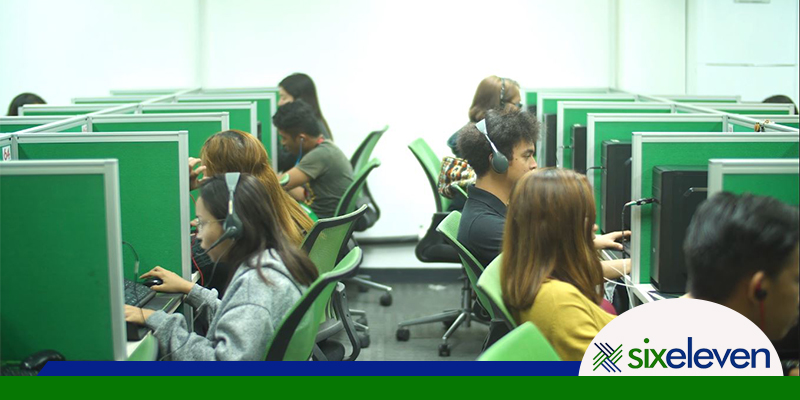SixEleven Global Services Demonstrates Operational Resilience Following Recent Earthquake
Davao City, Philippines — Following the recent earthquake that struck parts of Mindanao, SixEleven Global Services reaffirmed its commitment to safety, preparedness, and operational continuity.
Immediately after the tremor, the company’s Business Continuity and Emergency Response Teams were activated across all sites. Evacuation procedures and safety headcounts were swiftly conducted to ensure the well-being of all employees. Within minutes, each site reported all personnel safe and accounted for, with no injuries or major structural damage recorded.
GET FREE QUOTE
Send us your requirements and we will get back shortly.
Leveraging its robust Business Continuity Plan (BCP) and multi-site redundancy framework, SixEleven’s operations teams coordinated real-time assessments of infrastructure, connectivity, and systems stability. Owing to these proactive measures and the seamless collaboration of its workforce, normal operations resumed within approximately one hour of the incident.
For employees temporarily affected or unable to return on-site, work-from-home (WFH) contingencies were immediately implemented to maintain service delivery and uphold client commitments without disruption.
“Resilience and readiness have always been integral to SixEleven’s culture,” said Mr. William Wijangco, Chief Operating Officer. “Our ability to recover quickly after such events is a testament to our people’s dedication and to the strength of our business continuity framework.”
Business Continuity Plan (BCP): Step-by-Step Playbook
Command & Roles:
- Incident Commander (IC): COO and delegated Site Operations Managers
- Safety Officer: Site Admin/Facilities lead
- IT/Network Lead: Infra & Systems Head
- Operations Recovery Lead: WFM/Operations Manager
- HR & Comms Lead: HR Head with Corporate Communications
0–5 minutes: Immediate Life Safety
Get 2021 Outsourcing Guide
Find out how SixEleven can help you with outsourcing
- Alarm & Drop-Cover-Hold until shaking stops; activate site alarms.
- Evacuation to muster points; Safety Officers lead floor wardens.
- Medical Triage for any injuries; call emergency services if needed.
5–15 minutes: Accountability & Site Control
- Headcount & Visitor Log Reconciliation; confirm all personnel accounted for.
- Perimeter Control; restrict access to critical areas pending inspection.
- IC Declares Incident Level (Minor / Moderate / Major) and opens Command Channel.
15–30 minutes: Rapid Assessment
- Facilities Structural Sweep (visible damage, ceilings, cabling, gensets, UPS).
- IT/Network Health Check (power, core switches, routers, SBCs, voice platforms, VPNs).
- Utilities Verification (commercial power status; switch to generator/UPS if needed).
30–60 minutes: Recovery Decision & Phased Resumption
Recovery Strategy Selection by IC:
- On-site Resume (Green): Controlled re-entry by zones/floors.
- Partial Redirection (Amber): Overflow to redundant sites (e.g., Maa, Mabini, Digos, GenSan).
- WFH Activation (Amber/Red): For affected teams per approved roster.
Client Communications (WFM/Comms): incident notice, ETA to normalcy, interim routing.
Workforce Re-Sequencing: priority queues, concurrency adjustments, TL OIC coverage, overtime/reliever call-ins.
60–120 minutes: Stabilization
- Operational Verification (AHT, SL, concurrency, contact rate, CSAT guardrails).
- Quality & Security Checks (screen recording, QA sampling, access controls, VPN posture).
- Continuous Status Updates (hourly to clients and leadership until KPIs normalize).
Within 24 hours: Post-Incident Assurance
GET FREE QUOTE
Send us your requirements and we will get back shortly.
- Root-Cause & Impact Summary (RTO/RPO attainment, lost time, client impacts, mitigations).
- Facilities & IT Preventive Actions (re-anchoring, cable trays, server room inspections).
- People Care (EAP/Welfare checks; shift adjustments for affected employees).
- Formal After-Action Review (AAR) with corrective actions, owners, and due dates.
- Report-Out to clients: timeline, performance, and continuous-improvement commitments.
Work-From-Home (WFH) Contingency—Operational Steps
- Roster Trigger: WFM flags affected agents by site/LOB; push WFH invites to pre-cleared staff.
- Secure Access: MFA + VPN, device posture check, DLP and call-recording verification.
- Toolkit Enablement: Softphone provisioning, knowledge base access, ticketing/CRM login validation.
- Performance Guardrails: Live adherence monitoring, QA spot checks, screen-capture audits.
- Client Routing: Temporary DID/SIP reroute and chat/email overflow rules until on-site capacity is restored.

